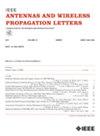基于改进温氏频谱的涉及主成分降维的海面散射快速预测模型
IF 3.7
2区 计算机科学
Q2 ENGINEERING, ELECTRICAL & ELECTRONIC
引用次数: 0
摘要
海面的电磁(EM)散射特性受雷达参数和海洋环境参数的影响,具有很大的复杂性和随机性。现有的海面散射系数估算模型,无论是电磁模拟方法还是基于机器学习的预测模型,通常都忽略了波浪参数的影响。为了全面考虑波浪参数,本文提出了风浪混合文氏改进谱,克服了传统风驱波谱的局限性。基于所提出的频谱和双尺度模型,得到了由风参数、波参数和雷达参数组成的多参数海域散射系数数据集。此外,还提出了一种基于机器学习的新模型,该模型将主成分降维与最小二乘支持向量回归相结合,用于准确预测海域散射系数。该模型能有效捕捉模拟参数的关键特征,减少参数间的耦合,从而改善现有快速预测模型在处理多参数海域散射系数时出现的过拟合问题,显著提高海域散射系数预测的精度。不同维度缩减的实验分析表明,适当缩减模拟参数可大幅提高预测精度,提高幅度从 10%到 35%不等,同时保持模型 99.5% 以上的可解释性。本文章由计算机程序翻译,如有差异,请以英文原文为准。
A Principal Component Dimensional Reduction Involved Fast Prediction Model for Sea Surface Scattering Based on Improved Wen's Spectrum
The electromagnetic (EM) scattering characteristics of sea surfaces are influenced by both radar parameters and marine environmental parameters, resulting in significant complexity and randomness. Existing sea scattering coefficient estimation models, both EM simulation methods and machine learning-based prediction models, usually overlook the impact of wave parameters. In order to consider wave parameters comprehensively, a wind wave mixed Wen's improved spectrum is proposed in this letter, which overcomes the limitations of traditional wind-driven wave spectra. Based on the proposed spectra and the two-scale model, a multiparameter sea scattering coefficient dataset comprising wind parameters, wave parameters, and radar parameters was obtained. Further, a novel machine learning-based model that combines principal component dimension reduction with least squares support vector regression is presented for accurate prediction of the sea scattering coefficient. This model can improve the overfitting issues in the existing fast prediction models that emerged while dealing with multiparameters of sea scattering coefficients, owing to the high-dimensional coupling among these parameters, significantly enhancing the precision of sea coefficient prediction because it can effectively capture crucial features from simulation parameters and reduces inter-parameter coupling. Experimental analyses with various dimension reductions demonstrate that appropriately reducing the simulation parameters substantially improves prediction accuracy, with gains ranging from 10% to 35%, while maintaining model interpretability above 99.5%.
求助全文
通过发布文献求助,成功后即可免费获取论文全文。
去求助
来源期刊
CiteScore
8.00
自引率
9.50%
发文量
529
审稿时长
1.0 months
期刊介绍:
IEEE Antennas and Wireless Propagation Letters (AWP Letters) is devoted to the rapid electronic publication of short manuscripts in the technical areas of Antennas and Wireless Propagation. These are areas of competence for the IEEE Antennas and Propagation Society (AP-S). AWPL aims to be one of the "fastest" journals among IEEE publications. This means that for papers that are eventually accepted, it is intended that an author may expect his or her paper to appear in IEEE Xplore, on average, around two months after submission.

 求助内容:
求助内容: 应助结果提醒方式:
应助结果提醒方式:


